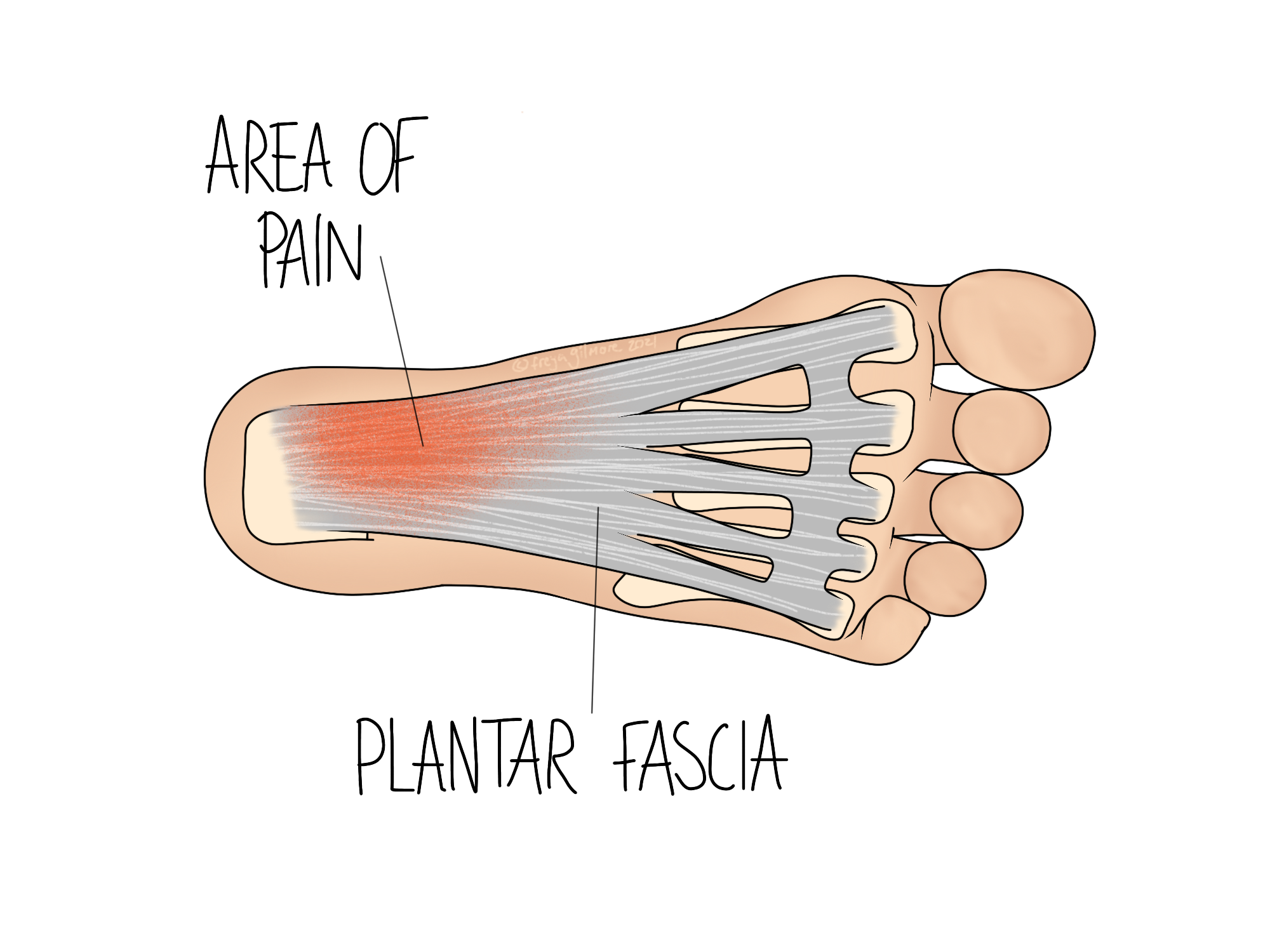Plantar Fasciitis
Plantar fasciitis is a common cause of foot pain, manifesting as an ache or sharp pain in the sole of the foot, near the heel. Despite the "-itis" in the name, the area is not inflamed. Rather, it is considered a degenerative condition. This is not to say that there is nothing that can be done for plantar fasciitis. There are a number of factors that lead to it, and some of them can be mitigated.

Risk Factors
A number of mechanical and lifestyle factors are associated with the condition. They include:
- high BMI
- wearing poorly fitting shoes
- standing for long periods
- high impact exercise
There are also risk factors that cannot be changed, such as diabetes. Some anatomical factors are also associated, but if your body can adapt well to them, they may have less of an effect on the foot. Some examples of these factors are:
- a leg length discrepancy (having one leg longer than the other)
- having especially high or fallen arches
- areas of hypermobility or muscle weakness in the foot or leg
Symptoms and Progression
The condition is typically chronic, with most cases lasting over six months. However, almost all cases respond well to gentle management such as osteopathy. It can affect anyone, but is most likely to affect people in their 40s and 50s, and people who do a lot of running.
Osteopathic Management for Plantar Fasciitis
As the condition is one of degeneration, our aim with direct treatment is to help the body heal the affected tissue. Work to improve local circulation helps to bring nutrients and healing cells to the area to begin to regenerate the tissue.
Exercises and self management make up a significant part of a management plan. Using a frozen water bottle as a roller under the foot can give some symptomatic relief. Osteopathy is holistic, so we work with all facets of the condition. Although pain relief alone might not make a huge difference to the condition, it might allow you to move better. If this then takes some of the strain off the area, it can be an invaluable part of the plan.
As mentioned above, we may also be able to address some of the root causes of your foot pain. No one is completely symmetrical, but sometimes a leg length discrepancy will have a significant effect on the foot. In this case, we work with the rest of the body to encourage it to adapt to the asymmetry. Working through the pelvic joints and muscles of the back might be an appropriate course of action. Similarly, with high or fallen arches, we want to make sure that the rest of the foot and leg can cope with the demands. Mobilising and strengthening the affected areas can help to take the load off the plantar fascia. We can also offer advice in regards to running or finding better fitting shoes. Remember to bring any shoes with you that you think might have an effect, as they will provide your osteopath with some useful information.